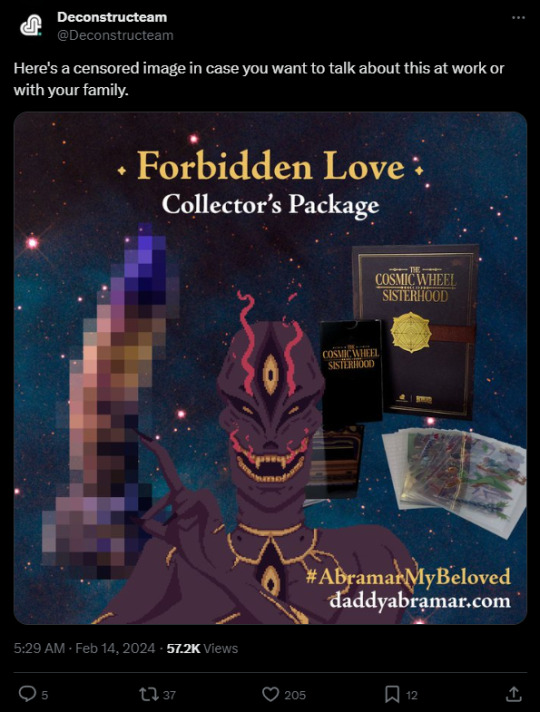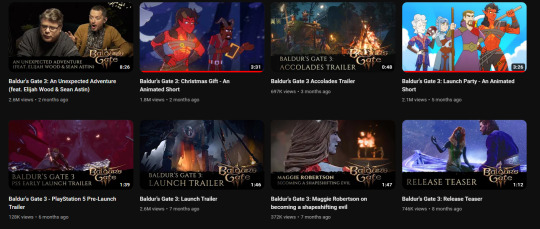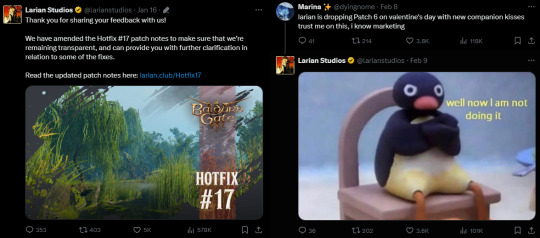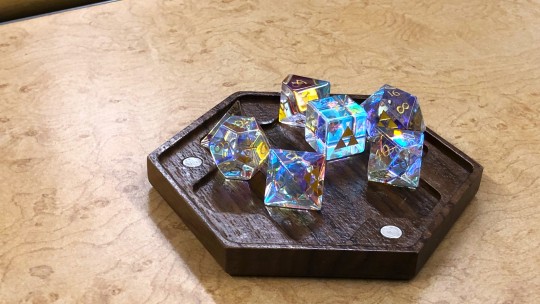Text
Hello fellow marketers. Welcome to our FINAL session of the Nat 20 Marketing journey!
I just want to ask. How are you? How are we feeling for having come so far? I will be honest here, it is a little touching that we’re seeing the end of this wild adventure on IMC. We’ve covered so many points regarding how to conduct a successful IMC campaign.
When I first started taking business in college, I wasn’t sure what the program would be able to inspire me. I thought business was plain and boring, and had to do with lots of numbers. Sure, as marketers, we still have to deal with numbers every day, but I would like to think that a successful marketing campaign consists of both refreshing creativity and data-supported numbers and statistics. In the realm of business and reality, money (and budgeting) is just far too critical to ignore. This is where we as marketers have to stay grounded when we come up with all sorts of fascinating ideas.
For this final blog post, we’ll look into the aspects of how to deliver a good pitch presentation. At the end of the day, marketers will have to present their BIG IDEAS to people with the capital to invest in these ideas. We are going to cover two major tips I figured out myself when I was preparing for my presentation the other week, hopefully, they’ll prove to be useful for everyone in the future.

First and foremost, you must know your target market inside out.
Research and data collection are sure to bring us insight into how our target markets behave and act. It is the most basic and the very first step to understanding our target market. I am going to take the pitch presentation I recently did for my marketing class as an example.
My group discussed heavily on the idea beforehand to make sure everyone was on the same page. I think this is extremely important because it can genuinely help each teammate prepare their individual parts at a better level of understanding. I think it is completely fair that each teammate focuses on different parts of the presentation since there are just so many points we have to talk about during the whole pitch. However, having everyone know what is happening exactly opens room for new perspectives, ensuring no stone is left unturned. It helps the team refine the BIG IDEA and allows the team to dive deeper in case there are any unreasonable concepts or objectives.
I think it is understandable that sometimes we are not completely certain with numbers and we are often left to make educated estimations. On one hand, we want to be logical with our budgeting and projected returns. On the other hand, we also want to be realistically optimistic about the BIG IDEA. If one is unsure of the BIG IDEA in the first place, how is one going to confidently sell the concept to investors and prospectors? How is one going to convince others that their idea is a good one?
Okay, we talked about being confident and thorough with the preparation and brainstorming stage. What about understanding the target market? How does it actually help?
When we reach the stage of complete understanding of our target market, we can shape the tone and energy of the pitch presentation to match the target market. It goes to show that those who come up with the BIG IDEA truly know the wants and needs of the target market well enough to think from their perspective; to consider what they care for; and to provide tailor-made solutions with their best interest in mind.

Taking the same example, the pitch presentation for my team is for the McDelivery app targeting GenZ gamers. When we think of GenZ, we think of adolescents and young adults. We think of middle schoolers, high schoolers, and university students. We think of young adults who are just kick-starting their career paths. They are a vibrant group with all sorts of interests and personalities. They care about individuality and societal issues. They are attuned to rapid technological advancements and are open to solutions that make their lives easier and more convenient, so they can make time for their hobbies and personal projects. When we think of gamers, we think of video games and entertainment. We think of action games, roleplaying games, puzzle games, horror games, comedy games, cooperative games, competitive games, cozy games, etc. There are so many genres in the market, and it is not a simple task to target all gamers. With a budget in mind, our team narrowed it down to a popular battle royale game in the market for a collaboration campaign. It is competitive and well-known across North America with a stable and large player base. Our team spent time researching the psychology and behavior of gamers who play competitive video games. We finally decided on the tone to be upbeat, energetic, and casual. This leads me to my next big tip.
Knowing the target market and the client should be the key to formulating the delivery format of the pitch presentation. We as marketers want to be close to our target market. We want to be a part of them and make them feel that we do understand their needs and wants. We want them to know that we have just the perfect solutions to their problems. For my team, we brought props to the presentation. We had headsets and console controllers. We had a TikTok video and a live demonstration to reflect how our target audience acts and thinks. We showed that we knew the target market’s priorities and passions.
I would like to humbly point out that roleplaying in a presentation takes quite some confidence and it may not be for everyone. Rehearsing with the whole team helps, but individual practicing is critical. The more we practice and the more hands-on we are with the group’s whole research and brainstorming process can be very helpful. It can get us to the point where cue cards are not necessary. We can freely move around the stage instead of rigidly standing next to the slides and reciting the script. (If it can be helped, I do suggest memorizing key ideas and terms in place of the script itself. It gives room for improvising on the spot and reduces stammering when we forget the next exact line.)
I do not think there is any standardized answer to how to prepare the perfect pitch presentation, but I think the two tips I leave here with you all today are worth considering and adopting for anyone who is planning for some kind of pitch presentation.
It’s been a wild journey finally practicing what I’ve learned in class in the past few years. Thank you for joining in on this ride fellow adventurers. I hope all your future marketing campaigns run smoothly and successfully. The rocks and bumps on the way are lessons to be learned, and for my final tip of this blog:
NEVER STOP LEARNING.
Thank you, and goodbye!
0 notes
Text
Hello fellow marketers! Welcome to this week’s Nat 20 Marketing on brand reputation management.
Brand reputation goes hand in hand with marketing. While a good marketing campaign can certainly bring a positive impact to a brand, it is so easy for brands to mess up these days and lose a considerable amount of their reputation because information can quickly go around and beyond the community depending on how big the brand is and what social media platforms are involved in the transmission.
Reputation itself means the opinion and beliefs of others on a certain thing, be it another individual or a brand. I’d like to think reputation is something that can be earned and lost based on the decisions made by other people. A popular influencer or public figure can lose the respect of their fans if they make the active decision to commit horrible acts, like predatory behavior, which we see almost all the time these days. A brand can lose its reputation because of a bad marketing campaign, unfavorable company policy changes for the stakeholders, or even more serious cases like bad work ethics or company culture.
For this week’s blog post, I want to showcase some recent cases of decent reputation management efforts demonstrated by big companies, and a couple of bad ones so we can all learn what not to do. Before we dive in, I would like to talk about the concept of “cancel culture” lightly.

A familiar phrase: Cancel Culture.
For those who frequent social media, “cancel culture” is no strange term. When influencers commit some kind of atrocity, the victims come out and in the next moment, the public will already be “canceling” the people involved in the scandals. If it’s a brand that is in the middle of the hot waters, then we will find posts encouraging boycotts and suggestions for alternatives.
The process of cancel culture always starts with someone calling out bad actions by another person or brand. Sometimes, it takes a long time before this process is even started, and usually, these callouts are backed with screenshots of evidence, audio clips, and videos.
The issue with cancel culture is that most of the time people tend to side with the victim, who is usually the person calling out the case. Until proof countering the claims is provided, people continue to circulate the original claims and spread them widely via the Internet on different platforms. Here comes my two questions for everyone, marketers and PR managers as well: how often do people really cross-examine such evidence to determine their authenticity and how should companies react when such claims become accessible to the public?
I admit that there just seems to be no single solution to how companies should react when negative allegations surface since it is always different between cases, but I do believe that there are just some things we can learn from examples of the past. To keep things up-to-date, I’m going to use some relatively fresh examples from 2023 to 2024.
Now, let’s look at a couple of examples to learn what not to do.

I’m sure by now you know I like to use examples from the game development industry. One of my favorite genres is farming life simulator. With Stardew Valley being my favorite game of all time, I have inevitably gotten curious about what the developers are up to over time. Arthur Lee, also known as Mr. Podunkian online, recently made an X post calling his previous employer, Eric Barone, out for not properly crediting him in Stardew Valley and came out with allegations of harassment that originated from his previous employer. If we scroll down to the comment section, we see people questioning why Lee didn’t simply just reach out to Barone and settle the problem privately. Lee’s effort is later questioned by fans as to whether it is merely an attempt to draw attention to his own game and shed bad light on Stardew Valley and Barone. To remain objective for the sake of this blog, I think this is not only a risky but also unethical way of gathering recognition. Should his allegations of harassment later be proven to be baseless or false, he will lose respect from his supporters and his game’s reputation will suffer as a result. In short, I strongly do not recommend putting someone else under the bus, especially one you used to work for, as a mean to promote your own products and services down the line.
The next example is related to DND and mainly the game’s publisher, Wizards of the Coast. The publisher attempted to revise its Open Game License (OGL) terms in 2023 but the revision was leaked to the public before it was made official. When the industry and the fans learned of the changes, they realized the new OGL would become majorly unfavorable for those who were creating content for DND. Wizards of the Coast was hoping to get a cut from monetized content through royalty fees after a certain threshold. The publisher was also looking to claim the right to use all OGL content in any way the publisher would see fit. These changes caused widespread outrage from the community and the industry. The backlash was so severe that the publisher later responded in a blog post with an altered version of the new OGL. In the end, the overwhelming negative reaction from the community resulted in the publisher completely stopping its attempt to change its OGL terms.
I’d like to point out that brands need to stay in touch with their customers closely at all times so they can make good strategic decisions. What Wizards of the Coast did can be viewed as a company losing sight of what makes its brand good and well-loved by its customers and supporters. Customers are critical stakeholders to all B2C businesses. Overlooking their interests entirely can ruin a company’s reputation in seconds with how fast information goes around these days.
That's enough for bad examples, how about some better efforts on reputation management?
We all know that being fired sucks. We all get upset when we learn that people we look up to are affected by sudden unemployment. Riot Games laid off many of its employees a few months ago. Riot Games knew that its community would be highly interested in the prospects of these affected individuals since many of them were from the creative team and they had designed well-loved content for the company’s two big games. So, to help the community feel a bit better, Riot Games released a news post listing all the compensations and support the staff who were going to be laid off would be receiving. While there were some complaints from the employees, Riot Games tried to mitigate the impact as much as possible by being transparent and supportive, going above and beyond to help its employees find new jobs. While I cannot say how effective the support system is in the end, I would like to say Riot Games tried its best to maintain its reputation as positively as it could.
As a digital artist myself, I’d like to think that my go-to brand for drawing tablets is Wacom, despite having owned only one tablet so far. I like Wacom’s products for their durability and quality. If I'm buying a new tablet in the future, I will most likely be looking at Wacom products first before comparing other brands. So what exactly about Wacom here? Earlier this year, Wacom was accused of using AI-generated images in their promotional materials. For a brand that sells drawing tablets with its primary target audience being artists, while Wacom should’ve been extremely vigilant with the materials the company uses in its advertisements and social media posts from the very start, Wacom made a public statement addressing the community’s concern and accepting responsibility for the oversight. This is an example of an appropriate response to controversy and criticism.
Businesses need to remember what goes out to the public directly reflects the public opinion of the brand. If a business’s reputation is lost, it is extremely difficult to rebuild the tarnished trust and goodwill depending on the severity of the situation and the follow-up responses. Mistakes are a part of human nature at the end of the day, but learning how to take accountability and say the right thing is critical to a brand’s success.

With that, I’d like to announce that the next blog post will mark the journey’s end for Nat 20 Marketing. I am quite excited to meet with you all one last time. Until next week, cheers!
#integrated marketing communications#brand reputation management#brand reputation#public relations#digital marketing#traditional marketing#marketing#business
0 notes
Text
Hello fellow marketers. Welcome back to Nat 20 Marketing! As mentioned last week, we are going to talk about personalization this time!
Let’s start with a quick definition of what that word means when we apply it to marketing and advertising – the act of making something suitable for the needs of a particular person.
For this week’s blog, I’d like to spend some time discussing why personalization is important in marketing, as well as how personalization can be implemented in both traditional marketing and digital marketing.
Why personalization when we can just generalization?

When we give a gift to a friend or family member, we often think about the things the receiving end would enjoy. For me, I like receiving gifts that expand on my art supply collection, video games, and art of things I like. For others, it can be things that they care about. It can be something related to their hobbies, their career, their health, and many other aspects. We think about these things deeply before we decide on what to buy or make for the recipient. This concept is the same for businesses to consumers. Businesses want to send their products to the right customers. Relevance is the key. The probability of an adult wanting toys made for kids is not as high unless they are parents, because then they may be looking to give their children a present. The probability of an artist looking for art supplies and drawing tablets is much higher than a person who doesn’t ever do art.
As marketers, we want to show our customers that we do know and care about what they care about. We are here to bridge that gap and build a connection.
The first step to personalization is to learn about your customers.
With the sheer population size across the globe that has access to the Internet, personalization has never been made easier thanks to cookies and large data sets so readily available.
The one thing that makes collecting data more difficult these days is consumers’ ability to opt out of such data collection to protect their privacy. There is also a rise of options for partial data collection where only “necessary” data is collected. Personally, at some point, I also opted out of such programs, but I have since recently opted in for partial collections. From a consumer’s standpoint, it is completely understandable that people do not want companies to collect all their information, from their biodata to what they look up on search engines and the messages they send to others on social media platforms. It is normal for people to feel uncomfortable having their entire profile publicly available for companies to take advantage of and push personalized content and promotions into their social media feeds.
Cookies, whilst being extremely efficient and effective at data collection, marketers should always look at other sources for data collection. Let’s use one of my favorite examples – video games.

Video game developers can source their data from online reviews, forums, and social media all the time. They can find out what their players want in the future and what they are dissatisfied about. Let’s take the example of the game The Cosmic Wheel Sisterhood. The common consensus from the players by skimming through the reviews is that they wish the behemoth in the game is romanceable. Unfortunately, to make that happen in the game itself may pose challenges due to plot reasons, but the game developers showed that they do know what their players want in their recent online event celebrating Valentine’s Day. The developers launched a contest inviting players to create cards for a chance to win a real-life prize related to the popular behemoth character in the game. The prize itself started a lot of conversation and surprise from the players. From a marketing standpoint, it can be considered a successful campaign of bringing word-of-mouth promotion on top of engagement from the community.
With the example above, we have successfully covered personalized digital marketing. What about traditional marketing?
Before we go into this topic, I must say that personalized traditional marketing is undoubtedly a costly investment, and may not always yield the positive result we predict it would be able to. However, think about it like this:
Patagonia creates a unique pamphlet that is playful in design and attracts the younger generation when the pamphlet arrives at their mailboxes. The chance of the receiver tossing the pamphlet immediately into the garbage bin is going to be much lower because they are more likely to flip it open and see what it does. Then, there comes the exposure of information to these young adults who can purchase clothes for themselves. It is more likely for them to remember the brand. It is more likely for them to talk about receiving such an interesting handout with their peers.
Traditional marketing with a touch of personalization is going to take creativity, time, and money. The stronger the impression we get to forge with our audience, the better the results will be. With information always bombing people thanks to rapid technology development and its ever-increasing daily usage, traditional marketing as a whole needs to step up its game to make an impact.
At the end of the day, IMC is not just about advertising goods and services. As marketers, our goal should not end at boosting sales but also creating a buzz amongst our potential and existing customers. Personalized marketing can be extremely powerful at sparking conversations and bringing in fresh impressions to the brand when it is done right. It doesn’t always have to be a publicity stunt or a heated and controversial topic. As long as marketers show effort that they genuinely understand the needs and wants of their customers, personalized marketing is one of the key elements to successful IMC campaigns.
Next week at Nat 20 Marketing, we will cover reputation management. Stay tuned and happy marketing!
#integrated marketing communications#personalization#digital marketing#traditional marketing#marketing#business
0 notes
Text
Welcome back to this week’s Nat 20 Marketing!
We are reaching the final stretch of this blog. It has been quite an exciting journey throughout, for I have learned a lot more about IMC itself through in-person lectures and activities, as well as outstanding real-life examples.
One thing I noticed during this whole journey is the frequent creative brainstorming processes that happen behind the scenes. As a creative person I’ve always been since childhood, I have absolutely enjoyed the opportunities this path has led me to so far.
This brings me to this week’s topic on traditional media for marketing and advertising.
Before we get into the juicy part of this blog post, let’s talk about what traditional marketing is.
We are so used to digital marketing these days on our smartphones, tablets, and computers that it is very easy to overlook traditional marketing channels like the television, newspapers and magazines, billboards and advertisements printed on vehicles, expos, and conventions, etc.
The reality is that there is likely never a point in time we can completely abandon and move on from traditional marketing means, because we are humans, and we are social creatures. We go out for school, work, social activities, and many things else. They may seem insignificant in our busy lives, but they are still information our brains gather passively as we move along with whatever we may be doing. Just like digital advertisements, it takes a few times before our brains can fully register and retain the content in our minds. When we are surrounded by the same advertisements over and over, it is more likely that we will recall the brands in the future when we need any goods and services from those lines of business.
In the past, I have always thought that traditional marketing is relatively boring because, in my perception, this type of marketing is just advertisements on printed media. I will admit that I don’t read a lot of newspapers or magazines myself, and I have so easily dismissed the advertisements around me as I go on with my day because I am simply so used to seeing them all over the place. What I do not notice is that my subconscious has been silently soaking up all this information like a sponge every day. The constant and regular exposure to these advertisements, as I revisit them when I commute back and forth, functions the same way as we view the same advertisements on social media repeatedly in intervals.
On top of these passive advertisements placed around us, there are still other meaningful methods to get the brand’s products out into the market.

For most DND enthusiasts, anime, movies, and video games are easily the common go-to entertainment aside from tabletop games. I’d like to talk about video games in particular this time. There are many conventions and in-person events across the world yearly that showcase upcoming games developed by both indie teams and AAA companies. Some games offer a free demo if you visit their booths, and you can decide whether you want to buy the games when they officially launch in the future. These playtests are also used as a critical source of instant feedback from a large pool of players of different ages, genders, and preferences. Developers can easily collect data and modify their games to better fit the expectations of their potential players, who are going to be their customers. If the team decides to listen to and adopt the feedback provided by the players, it can build positive relationships with the players. This is beneficial in the long run and creates strong brand loyalty.
Now that we’ve covered the gist of what traditional marketing is, I want to go over how we can get creative with them using a couple of examples I learned about last week.
Let's start mashing traditional marketing with the future!

The first example would be the KitKat billboards that give you a massage when you lean your back onto them. I would have never thought of this idea. It is truly out of the box and brings technology into these plain advertisement billboards you can so easily find at bus stops and train stations. While I cannot say how the massage experience really feels because of the unconventional limitations to these massage devices that were installed inside the billboard, it is most certainly the uniqueness of the experience that would leave people a long-lasting impression. People would remember that KitKat once did this campaign, and I think it aligns well with the value the chocolate tries to deliver. It is a snack we would eat when we want to relax for a bit. It is a convenient snack we can have on-the-go.
The second example would be Canadian Tire’s marketing campaign on their pet products. It is extremely creative and smart for the team to focus their attention on the pets instead of only on the pet owners. The team created these scented promotional devices to attract dogs when they are on their walks with their owners. These devices are also tailored to attract them visually, in colors that they can easily discern, as it is commonly known that dogs are born with colorblindness. Much more is done throughout the campaign to bring more dogs (and their human friends) to shop at Canadian Tire. With this example, it is so difficult not to realize that sometimes we don’t always have to market our products to the ones who are paying, but also to the users. Be it your children or your fur companions, it is proven time and time again that marketing campaigns creatively designed are far better than generic advertisements.
That being said, these campaigns are often far more costly. It is truly an investment that takes time, effort, and money. Sometimes, it may even be a risky one, and may not even be well-received!
Before we end this week’s post, I’d like to try out this handy dandy poll function on Tumblr! We’ll be back at Nat 20 Marketing next week with the topic of “The Power of Personalization”.
0 notes
Text
Hello and welcome back to this week’s Nat 20 Marketing!
With so many of us using social media platforms or online services these days, it is completely inevitable for us to come across some form of digital marketing campaign and online advertising.
For this week’s post, we are going to dive into the definition of inbound and outbound marketing, as well as some common online advertising techniques.
Inbound vs. Outbound… What are they exactly in marketing terms?

When marketers talk about outbound marketing, they usually mean sending out advertisements to potential customers with general messages, non-targeted and can be considered the push tactic, where goods and services are pushed towards the audience. So, you may think that this kind of advertising is far too generic and reaps an uncertain number of positive responses because of its interruptive nature, but it is a cheaper way to reach people in a short amount of time and with little effort.
Cold calls and spam emails are some known ways to do outbound marketing, but as people begin to value their privacy more over the years, some of these methods are slowly eliminated because of their ineffectiveness. People have been rejecting these calls and reporting such emails as unwanted content, and systems have been developed to filter out these messages.
Then again, not all of these advertisements are completely cut out from the whole promotional budget. We still see advertisements on billboards on a freeway, in the newspaper, and the magazines, as well as other more traditional channels like television channels.
On the other hand, inbound marketing strives to interact with its target audience. They are often campaigns that are planned and created with more effort to attract and pull the target group towards the brand with a deliberately crafted message. When marketers work on these marketing campaigns, they know it is more than critical for them to understand the people they are trying to send their messages to. They look into what these people value and care about, their lifestyles, their preferences, and many other aspects related to them. With the amount of research and planning that goes into designing these marketing campaigns, it is undoubtedly more time-consuming and costly. However, the returns on these projects are often more reliable and effective.
The format of inbound marketing includes blog posts (hi!), collaborative projects, content communities, etc. Thanks to these formats, marketers can also forge a stronger and closer relationship with their customers and enhance the target audience’s sense of belonging to a community which is much more beneficial in the long run. We are creating good positive public relations in this case.
Digital marketing in a nutshell…
In this age of rapid technological advancement, a large population on Earth are avid users of the Internet and social media. Digital marketing is no foreign concept to anyone who goes online.
While the old-school outbound digital marketing tactics are becoming less and less popular, I’d like to think that we can still find them here and there when we browse the Internet, and they can still be relatively useful to a degree. When we look up information, sometimes we find the first few results showing up in the search engines are actually paid advertisements. Companies pay a sum of money to have their links pop up at the top of the search results to bring in more clicks and viewership.
However, smarter users of the Internet have since learned to scroll down a little to find content that is not paid advertisements. They may even add a few more keywords to narrow down the results to what they really want to find.
So what about inbound marketing? I think it is best if we return to a familiar name that was mentioned some weeks ago as an example to learn from.
A good demonstration by Larian Studios!
Remember the last time we brought up Larian Studios? For such a well-received game-developing studio, part of its massive success comes not only from Baldur’s Gate 3 the game itself, but also its consistently well-planned digital promotions in various formats.

On Larian Studios’ YouTube Channel, one can see multiple animated videos created by content creators the studio has partnered with. Additionally, there were even DND campaigns hosted based on the plot of the game featuring several voice actors who worked with the studio to bring players an immersive gaming experience. On top of that, Larian Studios releases patch notes that are written in ways that are entertaining for the players to read and get the latest news of each game update. Many of these approaches can be considered inbound marketing since they are not at all generic advertisements that promote the game. They can be seen as a form of entertainment to not just the player base but also anyone who are interested in DND as well as gaming as a whole.
Larian Studios has created a strong bond with its community and one can easily see how the community in turn supports the company, from nomination and voting for the game and the studios at multiple game awards to a thriving community on platforms like Discord, Twitter, and Reddit.
My point here is that marketers should focus on understanding what their target audience enjoys and try to become part of their conversations. With the booming of digital marketing popularity, marketers can get creative with their approaches, especially with B2C businesses. While we cannot always just do carbon copies of other companies’ works, they can act as inspirations for future marketing campaigns one may organize down the road.
To conclude this week’s Nat 20 Marketing, the world is your oyster (what a cliche saying!), the only limitation is but your imagination and creativity (as well as your research). Until next week, adios!
#integrated marketing communications#digitalmarketing#inbound marketing#outbound marketing#marketing#business
0 notes
Text
Hello and welcome back to Nat 20 Marketing!
After resting well for a week, we are back with our humble campaign toward successful integrated marketing communications. For this week’s topic, I call it the 3 R's – Right Message, Right Time, and Right Place, which we will cover one at a time.
Let’s start with the Right message.
When we promote a good or service, often times we want to make sure our point is well received by our target market. Marketers try very hard to be better than their competitors, at least from the outside. There are many ways to present what a company sells, such as comparing their own product against competitors (often unnamed in commercials); demonstration of the product usage and effects; endorsement from celebrities and influencers, etc. But, in IMC, we don’t really just talk about a product. We want to communicate a concept – the value that the company tries to uphold and provide for their customers. The value in a company’s product usually reflects directly at the mission statement, at what the company believes and promises to deliver.
When we target any segment, we want to understand where these people are coming from. We want to know what they care about and what they are looking for. We are the solutions. We need to send ourselves to them, and let them consider us when they are making the purchase decision. As a consumer myself, I like to see brands that align with what I care for, from my core principles to my hobbies and interests. I like brands that are honest and direct with their sales techniques. I tend to look at brands that are relevant to what I do daily. So, a company that sells gaming chairs should send their message to gamers who play video games when they are sitting at a desk. Mobile gamers may not care as much as console gamers when it comes to the quality of their chairs, since mobile gamers play their games on the go. With the right audience, we need to draft a message that really catches their attention. We need to communicate this message in ways that allow the brand to stand out from the others and memorable enough to last for a while, sometimes even after the marketing campaign is over.
When you read through this blog, I have raised several marketing examples from the past few years. Those commercials and campaigns did not happen recently, but they have left me a deep impression that I am able to bring them up naturally in writing and casual conversations with my peers. This is what marketers should aim for when they compose the message and perhaps the slogan.
Slogans can be a good primary channel to convey an idea. They are often short and catchy, with words that are impactful and to the point. The slogan may not always need to be grammatical, so marketers can be creative with their choice of words.
As free as creative writing can go, there are times when brands may be required to edit their slogans, symbols, or even logos to fit societal expectations. This may go into rebranding but I would consider it is a way to continue a product line without changing the core ingredients of what makes the product THAT product. A fairly recent and well-known case would be the Aunt Jemima brand name change to Pearl Milling Company, where the change was made due to the racist stereotypes present in the old brand name and logo.

On to choosing the RIGHT time…
A good marketing campaign should be timely and relevant. Marketers should always be on the watch-out for the latest trends and decide whether to join in on the bandwagon or not. Sometimes, marketers need to take the initiative to bring forth new ideas that really wow their target audience. There are so many big and small contributory nuances we must think about when designing a marketing campaign. There are seasons, politics, social issues, and the list goes on. Sensitive messages should be handled with care, and a critical part is choosing the appropriate time to communicate.
For example, during the pandemic, marketers would promote social distancing instead of social gatherings, since it would be inappropriate to encourage gatherings when there was a highly transmissible virus going around the world that was taking away countless of lives. Every year, marketers take the opportunity to promote their products according to festivals that happen around the world, celebrating different cultures, from Lunar New Year to Christmas; from Easter to the Moon Festival.
Lastly, it would be choosing the RIGHT place!
Different generations of people indulge in different types of media. Baby boomers may prefer traditional channels like newspapers, magazines, and television. Gen Z and Gen Alpha would choose the wide variety of social media instead. As marketers, they need to analyze and follow their target audience to where they spend their time. Additionally, some may even have to consider going to public venues such as the Super Bowl and cultural conventions.
Let's wrap up!
To summarize, choosing the right time and place to send the right message out is critical the the success of an IMC campaign. They go hand-in-hand with each other and as marketers who aim for that Nat 20 roll for the marketing check, we ought to put effort into each of these elements when planning and organizing.
We will meet again next week with another Nat 20 Marketing post! See you next time.
#integrated marketing communications#digitalmarketing#right message#marketing#right place#business#right time
2 notes
·
View notes
Text
Welcome to part two of this week’s Nat 20 Marketing!
In the last post, we covered what makes a BIG IDEA good. Part of a successful delivery comes from knowing the audience’s needs and where to find them. The other critical part is choosing the right tone and right message for it.
What are tones and why do they help in marketing?
To simply put, tones give messages an emotional touch and help the recipient picture the scenario better. A birthday party should be a happy occasion, so the invitation should sound joyous and exciting. A funeral is a serious and sad occasion, so it would be much better to sound sincere when asking people to visit the memorial service. If the tones are not used correctly, the message is going to sound jarring and possibly triggering. When people say “read the room”, it means using the right tone and saying the right things at the right time to match the emotions and energy of others.

I have seen promotional campaigns for charities and I have a rather personal gripe against the tones the organizations usually use to send their messages. Some organizations prefer showing the harsh reality of what is happening to those in need in addition to using severe and depressing tones. The use of people’s empathy is often highly effective in marketing. It helps raise awareness and catch people’s attention extremely quickly. Despite this, I find these advertisements to be rather guilt-tripping and manipulative. Whether this take on marketing for not-for-profit organizations is ethical or not is subjective, but as a consumer, I will be brutally honest here: I tend to skip these advertisements in a heartbeat and if I can, I will also send a report to whichever platform I am currently on that I am not interested in such promotions.
So how do we make tones obvious for text-based communication?
Over the pandemic, we have all gotten used to online chatrooms and forums to replace in-person conversations. As a moderator for a rather popular server on Discord, I have since recognized the importance of tone usage. Let’s use the example of “Guess what happened last night” here to demonstrate. Without the tone, you can’t really guess what possibly could have happened and what the appropriate response should be. Your friend could have broken up with their significant other (sad), or your friend received a thoughtful surprise gift from their loved one (happy). Neurodivergent people have already struggled to detect tones when they converse with others face-to-face for a long time. The lack of tone in text is worse for essentially everyone.
As an avid online chatter, I find the use of emojis and tone indicators to be quite useful in solving this problem. Emojis are little pictures that show emotions and reactions. We are starting to see more companies adopting emojis into their social media posts to generate excitement and become a closer part of the community they serve. However, it’s not always that marketers can use emojis in their messages. For B2B companies, it is almost impossible to do so since emojis are often perceived to be casual and unserious. It is extremely dependent on the brand image whether using emojis to emphasize tones is a feasible solution.
The next best option is the proper choice of words. Language is evolving all the time. Ten years ago, we wouldn’t be seeing phrases like “slay queen” and “poggers”. Now, the word “cook” doesn’t always mean “preparing food”. People have started to use it for “making things into reality”. I can even say what I’m doing right now is “cooking up a blog post”. I wouldn’t use the word “cook” this way if I am writing a professional email to my senior at work, but I would use it when I’m talking with my friends. Using the right tone and the right words for the right occasion is the key takeaway.

Perhaps a blog post by a video game company would use words that are more formal, but daily social media updates should sound far more casual and even humorous given the audience is often gamers and from both Millenials and Gen Z. We can take a look at Larian Studios’ posts and replies on X. The studio uses a good mix of images, gifs, emotes, and casual phrases to connect with its customers (i.e., the players) every day. When Larian Studios was celebrating its achievements after the Game Awards last year, the tones were more heartfelt and thankful for the community’s overwhelming love and support.
Okay, and what about the message content itself?
As mentioned in the previous blog, people’s attention span has declined significantly over the past two decades. Short videos that are no longer than a minute have become the most popular media for content creators to reach their audience. People multitask all the time. They can be working on a research report, watching a YouTube video, and replying to their friends on WhatsApp all at the same time. A short, catchy slogan or even a musical tune is probably one of the best tactics to have people remember the brand.
A few years ago, I watched an advertisement by PepsiCo called STACK YOUR SLEIGH. It was a very short video but it left an extremely memorable impression because of the song that was rewritten and sung in it. I still remember it to this day to use it as an example. The video was made for the holiday season, so the company chose an uplifting Christmas carol classic as the base. The advertisement was rather well-received judging from the positive comments on YouTube. Even without watching the video itself, the audience can already easily tell what occasion the commercial was targeting. On the contrary, if PepsiCo chose Silent Night as the base, it might not have worked as well due to the slow and peaceful tone. This directly links back to the key point of this blog post: CHOOSE THE RIGHT TONE FOR THE RIGHT MESSAGE.
This is it for this week’s Nat 20 Marketing. Stay tuned for next week’s post on Right Message, Right Time, Right Place!
0 notes
Text
Hello readers. Welcome back to Nat 20 Marketing! It’s been a while, but we’re back in the game and it’s time to catch up!
For the past two weeks, I have been pondering what makes an idea good in marketing. There are a few items that make an idea good, and here’s a summary of them.

First and foremost, what even is a BIG IDEA and why is it important?
Whatever products or services your company is trying to sell, as a marketer, we want our current and potential customers to stop and hear us out.
People have openly admitted that their attention span has been declining rapidly over the years. The fact is that many people have been multitasking for years because there is just so much to do in a day yet there is so little time.
TikTok is the world’s most downloaded app and has pushed other social media platforms to introduce short video format equivalents in order to stay relevant and competitive, like Instagram Reels and YouTube Shorts. As baffling as this sounds, a live streamer from China has managed to earn millions of dollars from promoting products in 3 seconds. 3 seconds is an extremely short time. You can barely even learn what the product can do in that amount of time. The best you can do to promote the item is stating its name and price. Yet, this strategy has worked extremely well for the streamer. People are buying products she has so far promoted, even with the blatant lack of product description.
Now, the Chinese government has already responded to this case and banned commercials as short as 3 seconds because it is simply unrealistic for consumers to know what they are actually buying. They essentially have no time to consider alternatives or to compare properties and prices. This, however, is proof that if marketers want to attract consumers, they need ideas that can catch and retain people’s attention. It has been revealed that an average consumer needs to view an advertisement at least seven to eight times for the advertisement to be effective. Meanwhile, the advertisement should be relevant to the consumers who are exposed to it. An easy example would be presenting an advertisement for a professional drawing tablet to artists who do digital art. If the advertisement does not match the interests of the target market at all, it has already failed.
Thanks to modern technology and the hidden algorithms that bring advertisements directly to a company’s selected target market, marketers are now left with the million-dollar question:
What should the BIG IDEA be for the campaign?
In this day and age, it can be challenging to come up with an original (and possibly revolutionary) idea. I think it is fine to borrow ideas from others and give them a twist to make them our own. A large part of creation is recreation. The execution of a good idea is just as critical at the end of the day.
In every BIG IDEA, there is always a message. A product (or a service) is the solution, the answer, the fix for the consumer’s problem. Perhaps they are hungry, food is the answer. Maybe they find plastic straws wasteful, reusable metal straws are the way.
Now comes the delivery and its execution. We need an idea that really pops and quickly captures the consumers.

Recently, I worked on a pitch video for McDonald’s. Its target group was GenZ gamers, so I’ll be using it as an example. The objective was to increase the number of downloads of the McDelivery app and increase the number of orders made via the app. The app’s main competitors are other online food delivery apps like Uber Eats and SkipTheDishes.
The first step to creating the BIG IDEA is to understand the target market. Gamers play video games. Whether it is to relax or to climb those competitive ranks, they don’t have time to sit away and eat. They want to be able to have their refreshments conveniently. Easy food like burgers and fries are great. Food services that are still available late at night are even better. McDonald’s has it all.
The next step is to connect these gamers with McDonald’s services and to bring them to the McDelivery app. McDonald’s needs to create values so the gamers would choose the app over the competitors. They need to create an exclusive experience that would bring more attention to the app.
A marketer can consider what has already been done by others and follow suit, or attempt to do something unique. While the core concepts may be seen as “unoriginal” if the former method is chosen, marketers can make changes to the campaigns to better fit the marketing and business objectives.
Marketers in the west have been found to be rather reluctant in collaborating with video games for various reasons, one of which being the perceived violence in video game content. Changes to this perception have been observed over the past few years as we see one of Riot Games' flagships League of Legends collaborating with clothing brands such as Louis Vuitton and AAPE in 2019 and 2020 respectively. McDonald’s can hop on this train and collaborate with big game titles like Valorant (Riot Games) and Overwatch (Activision Blizzard). The games can introduce exclusive virtual cosmetics while McDonald’s can create time-limited menus themed after the games it is partnering with.
The third step is to send the message to the target market. While advertisements can be placed on social media platforms and let the audience view them passively for a few times, McDonald’s can choose to collaborate with community content creators and have them bring the news to their audience through livestreams and videos on Twitch and YouTube alike.
Lastly, marketers always need to review the numbers and responses from the market to evaluate the success of the campaign. Both quantitative and qualitative data are equally valuable to understanding the reactions from the community. Numbers alone cannot explain everything; it is a trap that marketers often find themselves in. If the market complains that there is a severe disconnection between their needs and the products that are being sold to them, marketers will need to slow down and address the problems moving forward. Otherwise, people will eventually move on from the brand because they feel that they are not heard and their opinions do not matter. This is a major red flag.
On top of surveys, marketers need to know where to look for community feedback. Online forums like Reddit can be quite insightful even though it may not be the most popular platform in comparison to TikTok and X (formerly Twitter).
As a gamer myself, I find AAA games that listen to community feedback and take action accordingly more enjoyable than not. It is not to appease the players. Rather, it shows that the developers do care about their players’ thoughts. It builds better loyalty and a sense of belonging to the community, far more beneficial in the long run.
So that sums up the first part of this week’s Nat 20 to Marketing. I’ll see you all again very soon in my next post about setting the right tone in promotional campaigns.
0 notes
Text
Welcome back to this week’s Nat 20 Marketing!
This week’s going to be about the secret ingredient to successful IMC, so sit back, relax, and read on.
In the world of business, we cannot always count on luck that our strategies will work out all the time, especially without proper planning ahead of time.

Last week, we covered the difference between marketing and IMC. With IMC being part of the whole marketing strategy, the simplified process for IMC starts with reviewing the core marketing plan. This is logical, after all we need to know our goals and objectives. Then, we’d like to learn about the consumers and the brand itself more. During this stage, we as marketers will need to know what concepts and ideas the brand would like to represent; what values the brand would like to deliver to its customers. After that, we would need to determine the budget for the IMC program and then we would implement the program. Lastly, we would monitor and evaluate the performance of the program and revise the IMC plan as needed.
When we develop the IMC programs, there is always the chance that a slip-up may happen. It is only human. Timing and tones are important. Spellchecking and so many other nuances to take care of. The programs may not be as well-received as we predict them to be initially. That’s why we need to be ready to make changes in time. The worst case scenario would likely be having to take down the released content and issue an official statement addressing the problematic issues. Then again, that is why in-depth research and analysis are so critical to the success of IMC. We need to gauge what the target audience cares deeply about. In a world where businesses are all looking to give back to the community, it is up to us marketers to understand what a brand is fighting for and for whom we are doing these things.
In the business world, there is nothing not about money, money, and money. It is very realistic, and we must accept that we do not have unlimited resources, so sacrifices need to be made here and there. As a matter of fact, we cannot use the same programs to target every group. Age, gender, interests, habits, culture, and many more aspects all play key roles in a person’s decision on which service or goods to buy and acquire. For example, a child would likely be more interested in toy cars whereas an adult may be more interested in buying an actual car since they would be the one driving the vehicle. There is simply no one-size-fits-all solution in marketing.

Knowing that we cannot target everyone at once, setting SMART objectives is the next step. As anyone who works in any business, having a clear goal is more than essential in the long run. To quickly summarize, SMART stands for specific, measurable, achievable (or attainable), realistic, and timely. With the advancement of the Internet and the sheer speed of information transmission, being timely with content release is critical. What is important today may no longer be relevant or acceptable in a few months. People can educate themselves so easily these days with just a few clicks and a few keyword inputs. We need to have measurable objectives because, without this, it is difficult to determine if something is working or not. Everything moves so fast for us to sit and wait. We must be on the go and ready to interpret numbers and statistics and turn them into useful information for decision-making. If there is any key takeaway from this week’s blog, I would say being ready to go and move is the one thing to remember, for it can be applied to basically anything in life. Opportunities are for those who are ready in the moment. We must seize them before others do.
Being born in the digital age has made me feel more than thankful that collecting data has never been made easier. All the hard work is automated with artificial intelligence and computer programming. Efficiency and attention to detail are the words. Our work does not stop at the implementation step, we have to keep track of the data, the reception, the response, and the discussions that spark from the IMC programs. We need to react to them appropriately. Perhaps the program is so well-received that we may want to reconsider them again in the future, or the program is a dud and we should avoid repeating the same thing down the road.
With that, I think it is time to wrap up this week's topic by wishing you all good luck with formulating your greatest IMC strategy. Stay tuned for next week's BIG IDEA!
0 notes
Text
Welcome to Nat 20 Marketing!
Hi there! My name's Erin and I'm a Marketing student at McMaster University. I am an avid Dungeons & Dragons (DND) player who started playing the tabletop game last year. While I'm not the most experienced in the game, the immersive gameplay and exhilarating storytelling in the campaigns I have taken part in are so impressive that I began looking at other media related to DND.

For those unfamiliar with DND, we roll a 20-faced die all the time throughout each session to determine whether we successfully complete a task or not. A nat-20 means the die lands on the number "20" facing the front. This is good, because the bigger the number, the better the results. Now, who wouldn't want to roll high in any given scenario?
But enough of that hobby talk for now, this brand new blog is a journey for you to embark on with me to unravel the business world, particularly the marketing branch. Every week, you will find a fresh post here on this blog that leads you toward successful integrated marketing communications (IMC).
Hold up for a second... What even is IMC?
For starters, marketing involves planning for and presenting goods and services provided by an organization in hopes of building positive customer relationships.
Most business students would have heard of the 4 P's of marketing in their first years at university, namely Product, Price, Place, and Promotion. Here's a quick summary of what each P does:
Product: This is the thing you are trying to sell to people. It can be tangible or intangible. A cake is tangible, whereas customer service is not. The common theme here is that you can promote both (or either) to your target audience.
Price: This is the price you set for your product. The question lies in whether you want to sell your product at a premium or at a low price you simply can't beat anywhere else.
Place: Your target audience will have to be able to get whatever you're trying to promote somewhere, and this is where; be it for a brick-and-mortar location, or on a digital platform.
Promotion: No one is going to know your brand and products if you don't speak about it somewhere. Promotion is the part where you get the brand values all the way to your target audience's heads, so that they may consider YOUR brand when they are looking for a product that your organization may be selling. In DND terms, this is the part where you make a persuasion check and you want to do it right.
The 4 P's should be in sync with each other for both potential and existing customers to come back to your brand at the end of the day. If you are not selling a product with the same features you say they have in your promotional activities, then you would be lying to your customers and they may not come back for your goods and services. This leads to ethical issues which we will get into later on in this post.
It is to be noted that advertising and marketing are not used interchangeably by marketers. Advertising is a paid form of marketing communication through the media. It is part of the promotion plan in the marketing strategy. IMC itself is the strategic process used to plan, develop, execute, and evaluate brand communication programs with the brand's target audience, including the customers and even the employees of the organization.
With all these in mind, one can say advertising is part of an IMC strategy that supports the promotion part of the 4 P's in a marketing mix.
Okay... So, is marketing ethics all about being truthful?
Surprise, surprise! No, there is more to marketing ethics than the example mentioned above. The other two big issues that have arisen in recent years are offensive and controversial topics, as well as advertisements aimed at children.

Remember the commercial dropped by Gillette five years ago? The commercial was considered controversial and offensive because of its heavily stereotypical portrayal of men, lumping many into one single group that displays toxic masculinity traits. Each man is different from one another, and many men showcase fantastic personalities that are comfortable for others to hang around. In an effort to raise awareness of social issues, some organizations decide to pull publicity stunts by releasing promotional materials that may not be well-received by the general public. It is a bold way to set a trend and send potentially meaningful messages to their audience, to say the least.
There goes a saying: any publicity is good publicity. Personally, I think it is great that more brands have taken an interest in social issues such as equal rights for the LGBTQ+ community and gender equity, but one wrong move or oversight can cost the brand's goodwill with its customers that is established over the years. The key takeaway here is that humanitarian issues are often delicate. Companies should always handle these topics with utmost care whilst attempting to achieve their strategic goals in marketing.

I grew up in the era where YouTube did not have YouTube Kids and advertising to children wasn't as regulated as it is now. It is inevitable for parents to end up surrendering their smart electronics to their young children to pacify them. Children are exposed to all kinds of content all the time thanks to the rapid growth of social media. Let's take YouTube as our example for this discussion. The platform by itself is not bad, we get to see all genres of videos wherever we want from gaming to travel vlogs, sports to beauty, and so on. However, it is also extremely easy for children to accidentally stumble upon content that is not made for them. Some things may be appropriate for an adult to view because they can discern right from wrong and do critical thinking on their own. Children, on the other hand, are effective sponges that absorb everything they see and hear. Not to mention, children are excellent at whining to their parents to get what they want. Any smart marketers would see this as an opportunity to promote their products, but this is not the most ethical move. What we could be sowing here if we choose to target children in our advertisements are unhealthy behaviors and mentalities like materialism and irresponsible spending habits. Hence, we shouldn't be taking advantage of these young minds when we market our products to those who actually hold any degree of purchasing power (i.e., the parents).
Got it! Now what?
This is just the beginning of our adventure. Hopefully, when we reach the journey's end in a few months, both you and I will be more equipped for the real deal — marketing in the business world. Stay tuned for more!
0 notes